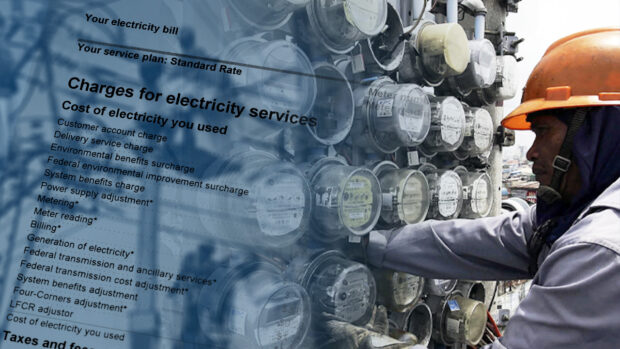MANILA, Philippines—A lawmaker on Wednesday (Dec. 20) asked why the Manila Electric Company (Meralco) cannot lower its rates like what electric cooperatives in the provinces do.
Rep. Presley De Jesus (Philippine Rural Electric Cooperatives Association) pointed out that “if small electric cooperatives in the provinces can offer cheap power to [their] residential customers, why can’t Meralco […] do the same?”
“Indeed, we in the power bloc, this is what we’re focused on, the energy sector, so in economies of scale, just for comparison, we have electric cooperatives offering residential rates as low as P6.50 per kilowatt hour (kWh),” he said during a hearing of the House legislative franchise committee on the Meralco franchise.
De Jesus said some of the cooperatives with low rates are Pelco II in Pampanga, Casureco I in Camarines Sur, Surseco I in Surigao del Sur, and Neeco I in Nueva Ecija, which are charging P6.50 to P8 per kWh.
“If we compare to Meralco, these cooperatives are so small,” De Jesus said. “Meralco holds essentially a mega franchise with the largest captive market.”
Power rates by electric cooperatives, however, are getting subsidies from the government through the National Electrification Administration, which is one of the reasons they can offer to charge low for the supply of electricity.
But De Jesus said Meralco has an estimated 7.7 million subscribers for 2023.
Meralco, in a statement on Dec. 11, said there will be a decrease of P0.7961 per kWh in the electricity rate for the month, bringing the overall rate for a typical household to P11.2584 per kWh from P12.0545 last month.
“For residential customers consuming 200 kWh, the adjustment is equivalent to a decrease of around P159 in their total electricity bill,” Meralco said, explaining that this month’s reduction can offset the increases implemented in the past two months.
It even pointed out that its rates “remain fair and reasonable,” based on a study conducted by the International Energy Consultants (IEC).
“In its cross-country comparison of 46 energy markets, including two American states, the IEC said Meralco’s average tariff in 2022 ranked 21st and three percent below the global average. It added that if subsidized markets were excluded, the power distributor’s tariff would even be 13 percent lower than the world average,” Meralco said.
But according to De Jesus, “with a wider customer base, we should be seeing a downward trend in electricity rates,” saying that “the economies of scale normally lead to lower cost as the customer pays growth.”
“Because of your size, because Meralco is so big, the economies of scale should be when you purchase big and your demand is big, your rates should be lower,” he pointed out. The high rates should be investigated, he said.
He explained that as the biggest distribution utility in the Philippines, Meralco is facing several inquiries regarding its franchise and whether it is committed to the mandate attached to its grant.
Expansion
De Jesus pointed out, too, that there are concerning reports regarding the possibility of Meralco expanding its franchise area, “even encroaching on localities that are already being served by smaller utilities.”
“Meralco is being accused of monopolistic practices and yet you are still attempting to expand, “ said De Jesus, citing information from Laguna Rep. Dan Fernandez in a privilege speech.
De Jesus said the House should already review the Meralco franchise and its possible split into three for better service and lower rates.
“I think it is imperative for us to review the grant of franchise to Meralco and open up the possibility of subdividing their franchise area,” he said.
With Meralco having a service area of 38 cities and 78 towns nationwide, it fits the definition of a monopoly, said De Jesus.
“If this further expands, there will be no more competition,” he said.


